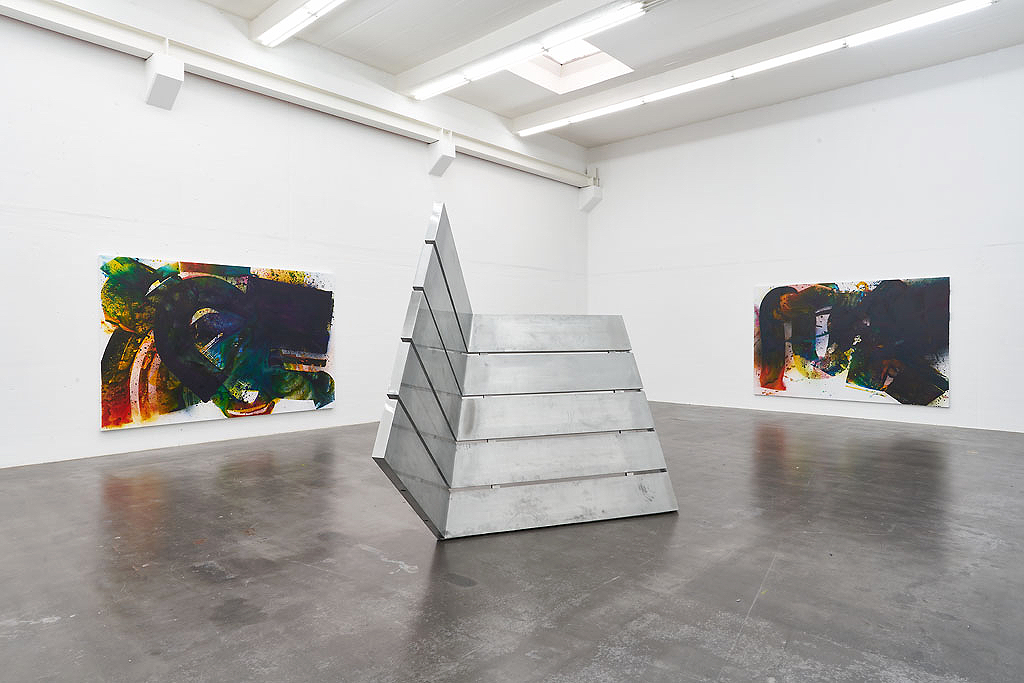
Installation view
Image courtesy of Berthold Pott
Fresh off his show with Pam Glick at Ober Gallery, Max Frintrop checks in with Erik Sommer to talk about simple tomato sauces, gazing into a void, the rush of small ideas, and assisting with the fight against Coronavirus.
Painting and I, this is a symbiosis.
(ES) First, describe your work for us.
(MF) It is painting.
Some people might read the bold colorful strokes of these paintings as captured emotion, or your attempt to bring beauty into the world. Are you concerned with such analyzations or interpretations?
A good painting, if given enough time, will always find its own way to reach out. So I am not concerned.
Hopefully the viewer spends enough quality time looking at the work to allow for this to happen.
Yes.

Image courtesy of Deichtorhallen Hamburg
Tell us a bit about your background. Where did you grow up?
I grew up in a family business, a restaurant, in a former center of mining and steel production in the Ruhr Area.
Did you ever consider staying in the family business?
My head was constantly in the clouds, a daydreamer like J.D. in Scrubs. However, after I moved out I became a decent chef, but I am not made for the gastronomy.
Any favorite dishes you like to make?
I like to slow cook dishes, and I love to put effort into a simple tomato sauce.
Where do you live and work now?
In Düsseldorf.
How do you think this has influenced your work?
Painting and I, this is a symbiosis. Not in a workaholic meaning but in a holistic interconnection of artist and art.
Do you remember any artists as a child that captured your attention?
You mean when I was adolescent? Sure. I still do clearly remember these artists having an impact on me: Jasper Johns, Mondrian, Monet, Morris Louis, László Moholy-Nagy, Fritz Winter, Dieter Krieg, Louise Nevelson and Vladimir Tatlin.
Interesting. I was expecting Richter or Kiefer.
Kiefer is, to me, just a heavy-header and his metaphors are as subtle as poems in standalone calendars on shelfs of guest bathrooms. Gerhard Richter is good, but it always feels so precious. When I was adolescent, and even more today, I am drawn to the gutty stuff. Just for example, the work of Richter’s former wife, Isa Genzken, is much more giving to me. I remember I liked Sigmar Polke, and internationally little-known Gerhard Hoehme.
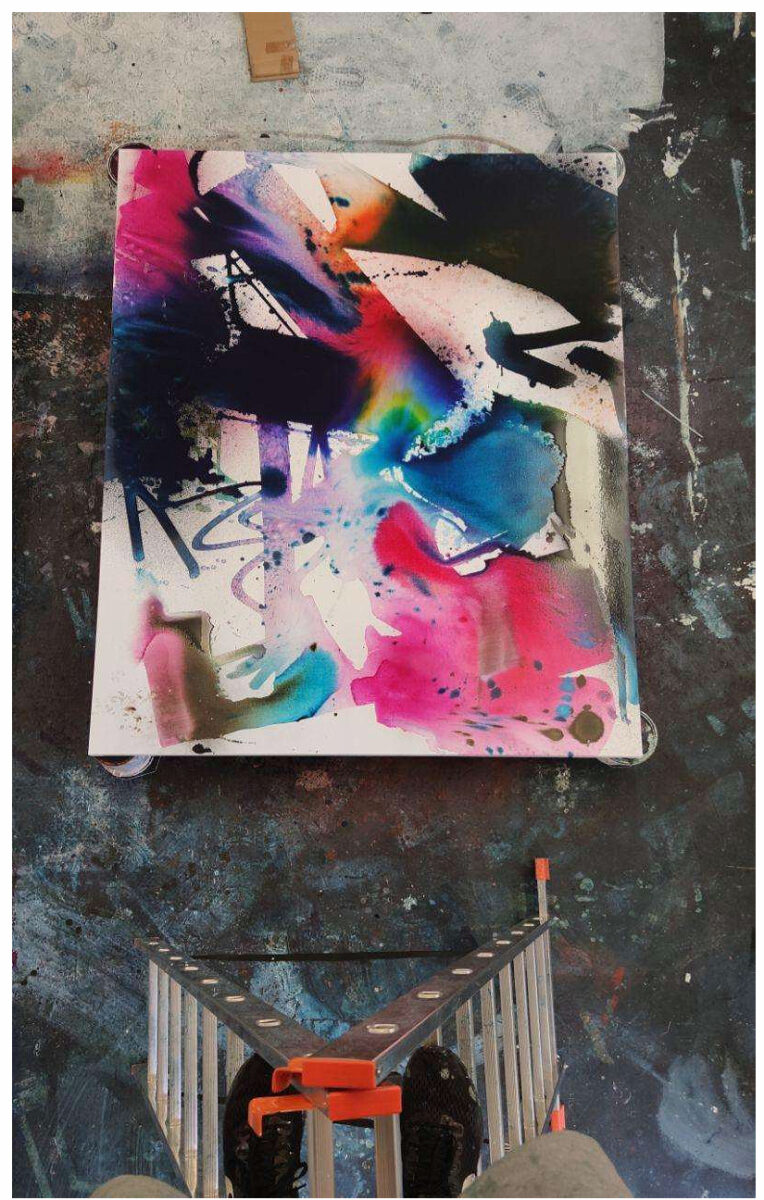
Image courtesy of Max Frintrop
Any artists today you are looking at?
Right now I am in love with the work of Michaela Eichwald, Frank Walter, Nathan Hylden, my friends Pam Glick and Simon Laureyns, and always present is my admiration for Helen Frankenthaler, Morris Louis and de Kooning… and so on. I am always looking at outsider art too.
You have mentioned how by working large the painting becomes a physical act. Can you elaborate on this?
Well, it is just more space to cover in the same time. My paintings right now are done in an all-or-nothing attempt to make them in one cast. A bigger canvas means a higher ante, with also the good things coming with it.
Do you work with the canvas on the wall or on the floor? Any special tools you use to reach the whole surface?
I use a ladder to get some distance when I am painting. I am building brushes and extensions on the handles all the time but don’t consider this very special.
Your brushstrokes allow viewers to witness your immediate decision making. How significant is this to the identity of the piece?
Turbo. I need the works as open about this as possible. Yet this is of course completely subjective! I just paint them straight “out of the wrist” and I as a painter see this but the viewer should just get a feeling of something done in the moment.
What was your earlier work like? How does it compare?
I considered everything I did in art school as just experiments. My “works” start after art school.
How do your sculptures relate to your paintings?
Incestuous?
With your sculpture are you attempting to recreate your paintings as three-dimensional objects, or are they an autonomous practice?
They have to have the vibe to them, but making them is something very different.
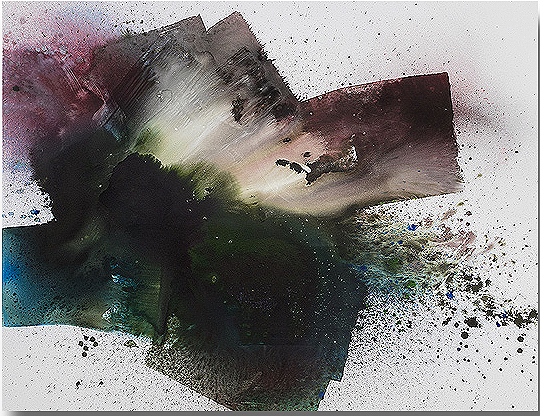
Image courtesy of Lyles & King
What is your normal studio practice like? Any routines or superstitions?
Not so much, but I feel like I need to be in the studio every day. I can’t, but there is always an urge and the workflow feels like a process that needs to keep going on perpetually.
What about your working technique? Walk us through how you start and develop a piece.
Gazing into a void, maybe. The struggle to stop you getting your head into the right gears. That is of course different every day and I stir up my process all the time. I used to make a lot sketches before I start. Right now I just try to find the right flow that day and start.
This spontaneity definitely shows through in the work.
Yes, spontaneity is but just one side of it. An approach, a basic idea where it might go. A basic concept but not a paradigm. There must be a rush of small ideas. Anything less feels like production to me. The process is as important as the result and the work has to be in part true. A proof of an ambition that meant trying to find something vaguely new. You always have to give something of yourself. The painting needs to be alive. It is a documentation of the struggle it means to find something original.
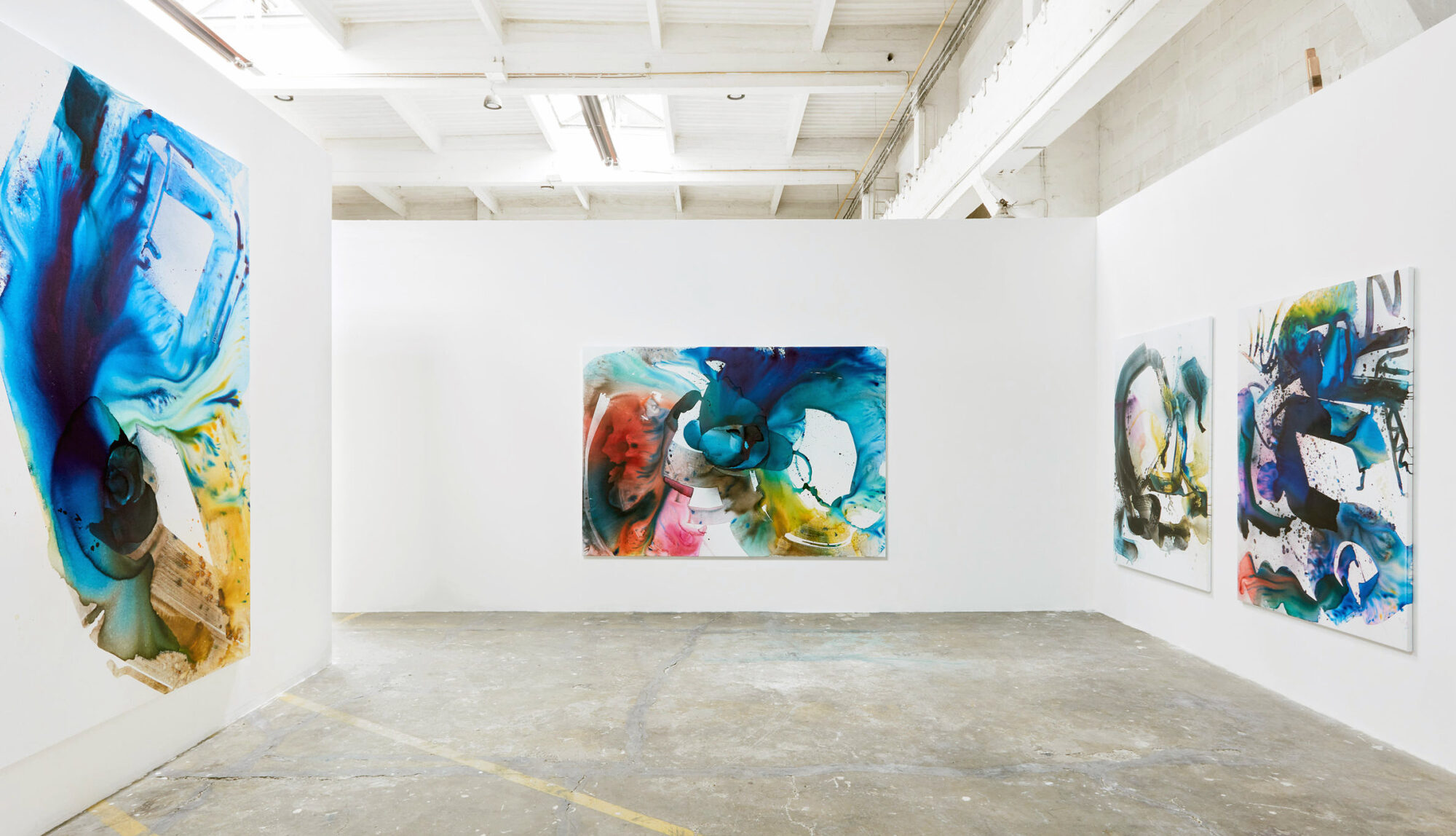
Installation view
Image courtesy of Budapest Art Factory
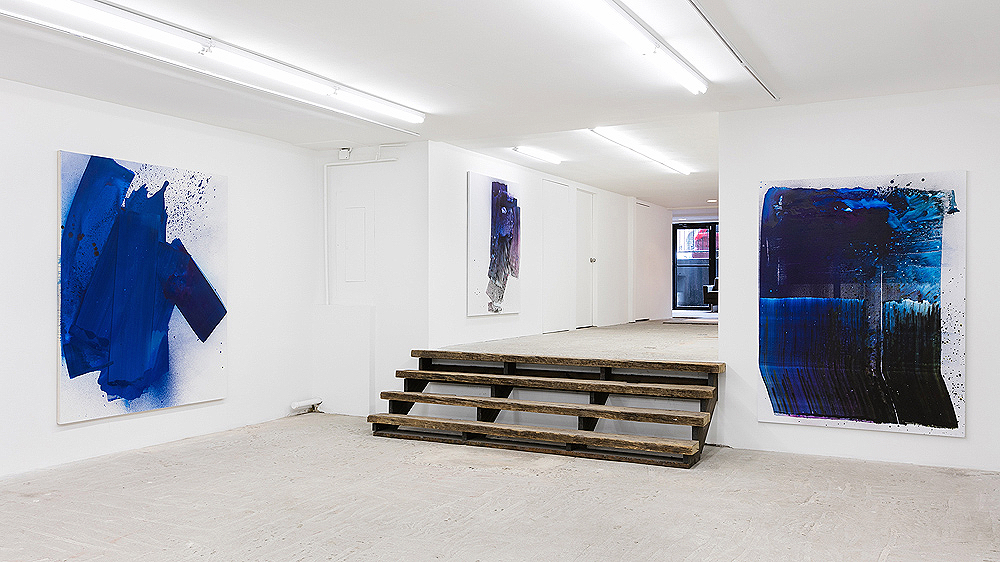
Installation view
Image courtesy of Lyles & King
The documentations of the struggle. I like that. A lot of artists, once they find what works and sells, just repeat ad nauseam. Their work loses depth and becomes, as you say, production.
Repetition can also be an important tool for art. I know what you mean and even though I agree I don’t think there is a sharp line.
What excites you the most about the current art world?
Being an artist, even if you just started school, art can be the ultimate access all-areas pass to society. This is in no other legal profession, but that of course is about being an artist in general. It is super hard to say what the current art world is or will be after this pandemic.
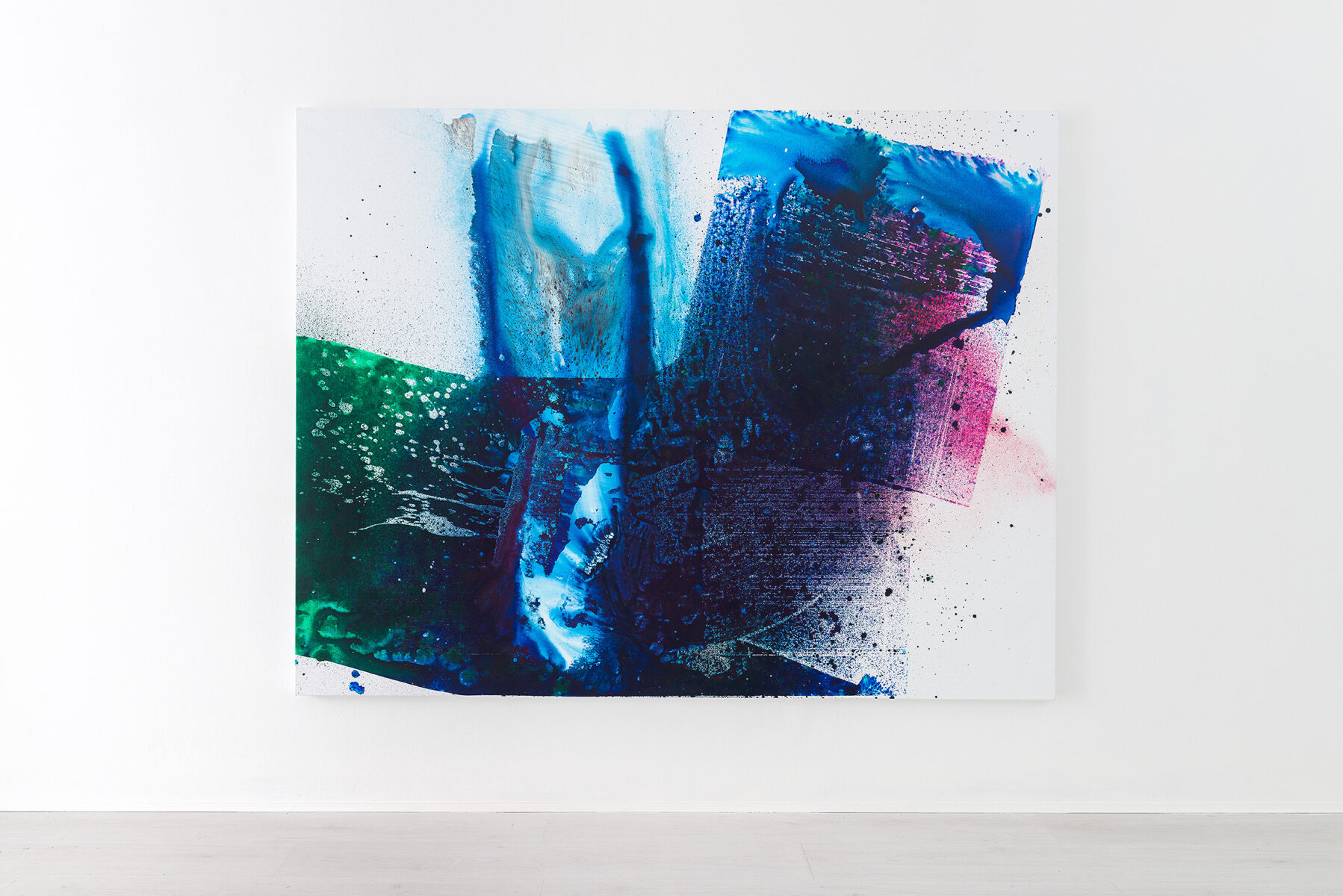
Image courtesy of A+B gallery
Sorry. Bad time to ask that.
Maybe it is actually very good timing because the one quality I see in this pandemic and economic crisis is that suppressed things are surfacing. More and more liquid capital is looking for something solid to turn into and the status value of art is still persistent. We have to also see that all young art is being cut off from finding any audience, which could become a tragedy. The seesaw, the traveling and spotting, is the actual status value of collecting young art for many people and without the events of art many people will lose interest. But the people of passion for art won’t stop. I love those people of conviction, everyone who is in the art world with passion. Even those who don’t like me, I miss them. I am looking forward to seeing them again.
I understand you are helping fight the Coronavirus in Italy. Can you tell us more about what you are doing?
I gave a bunch of paperworks to my gallery in Italy because Italy was hit so hard by COVID-19. We are not selling them directly. You donate directly to a charity a certain amount and he will send you the work you choose.
If anyone is interested please contact Dario Bonetta at [email protected]
That is great. Obviously we are all currently focused on COVID-19, but looking ahead do you have any recent or upcoming projects?
There is still the great group show running at the Deichtorhallen in Hamburg: Now! Painting in Germany Today.
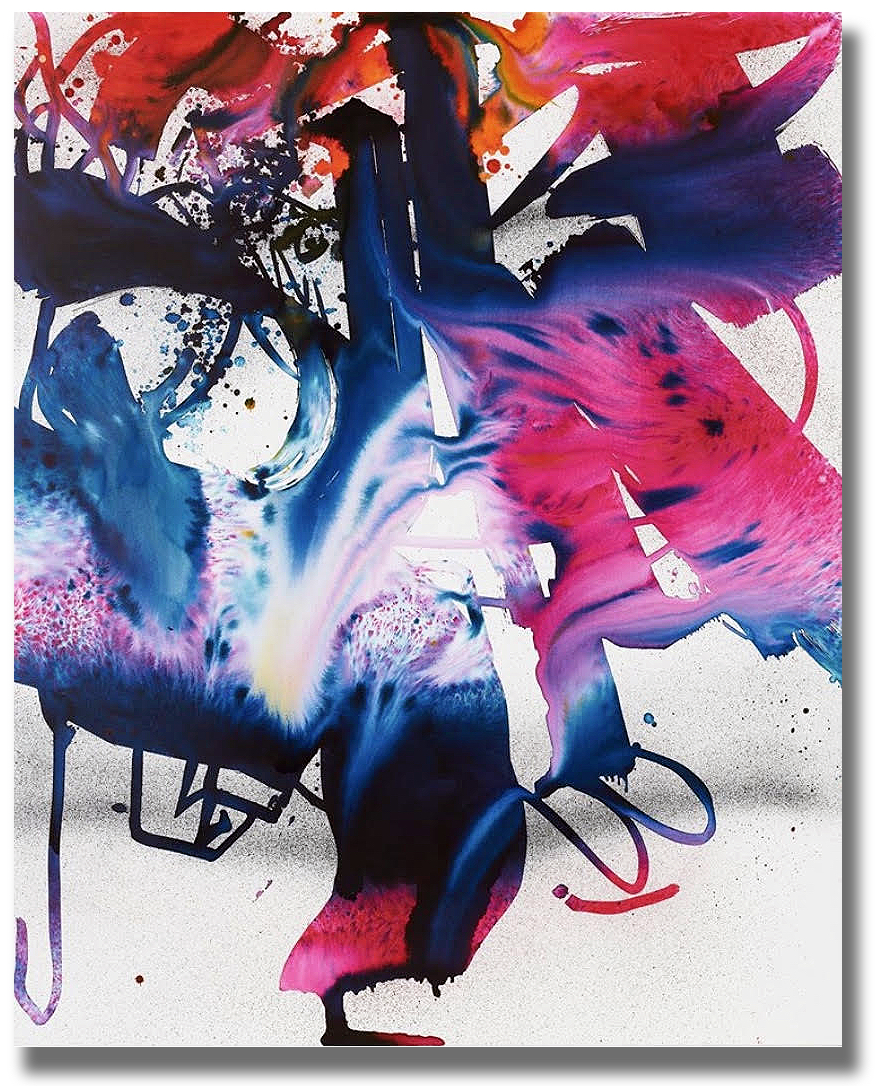
Image courtesy of Ober Gallery
There is also a group show in Amsterdam I am very excited about called Hallucinogenic at Gerhard Hofland and Project Space On The Inside. It started on the 6th of June.
One show just started in the US on the 4th of July. What I wanted to do was a “double double feature” show together with my friend and great abstract painter Pam Glick from Buffalo. First in Cologne at Berthold Pott Gallery in the end of May, and then back-to-back a show at Ober Gallery in Kent, Connecticut. Now we could just do the show with Robert Ober- it is called Painters in the Mist. We tried to do both shows but it was absolutely impossible to get Pam’s work from the US to Cologne in time. We are planning the show in Cologne early next year, and are taking the whole situation with this delay as a motivation to do it better.
Sounds amazing. Last question: what is your favorite color?
White!
Nice! You would be surprised how many people cannot give a definitive answer.
I almost never use the white as paint. I just work with the white of the background as space, and once I paint over I can never really get it back. It shapes the character of the works the most.
To see more of Max Frintrop’s work visit his website and Instagram page.
